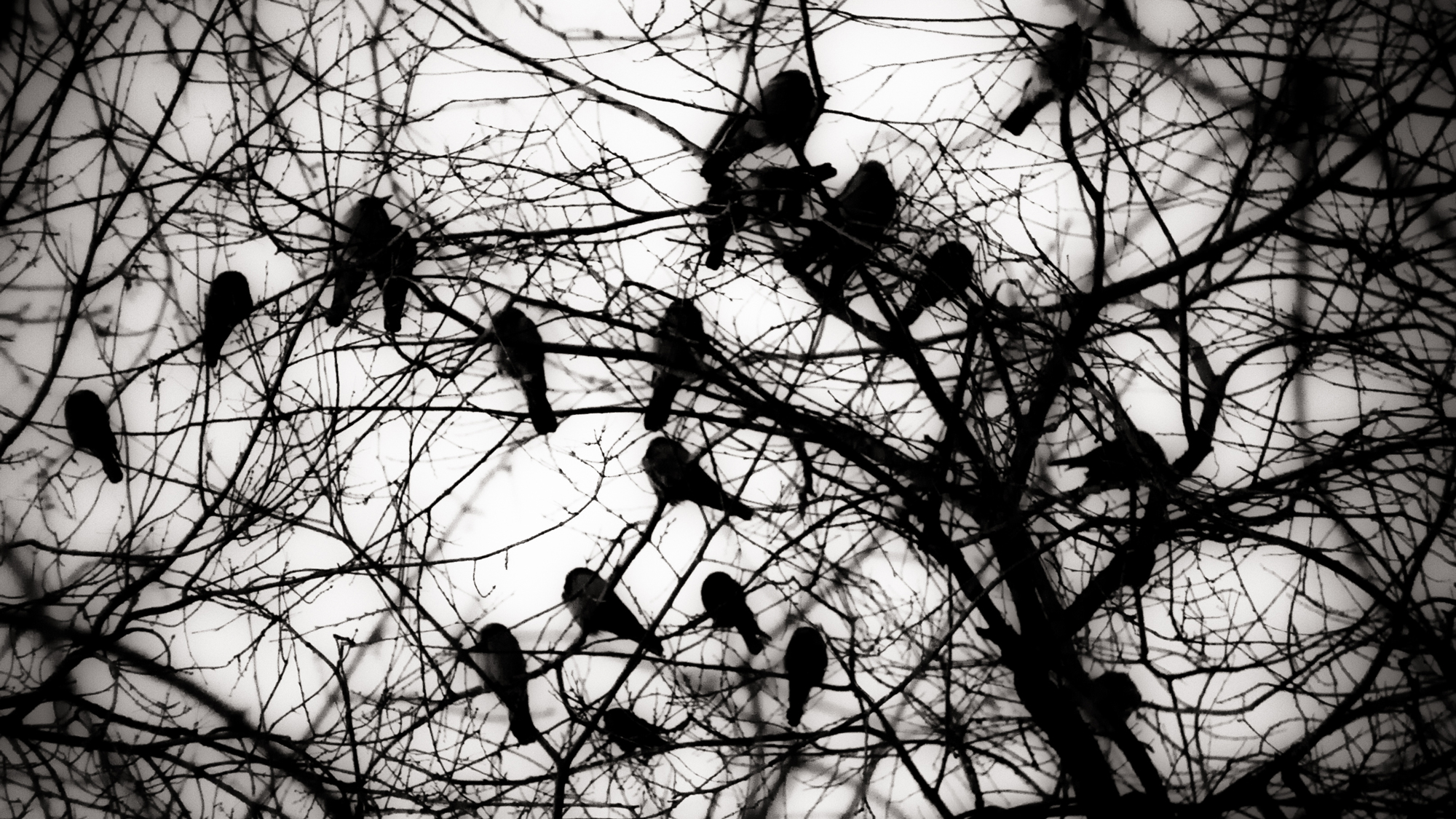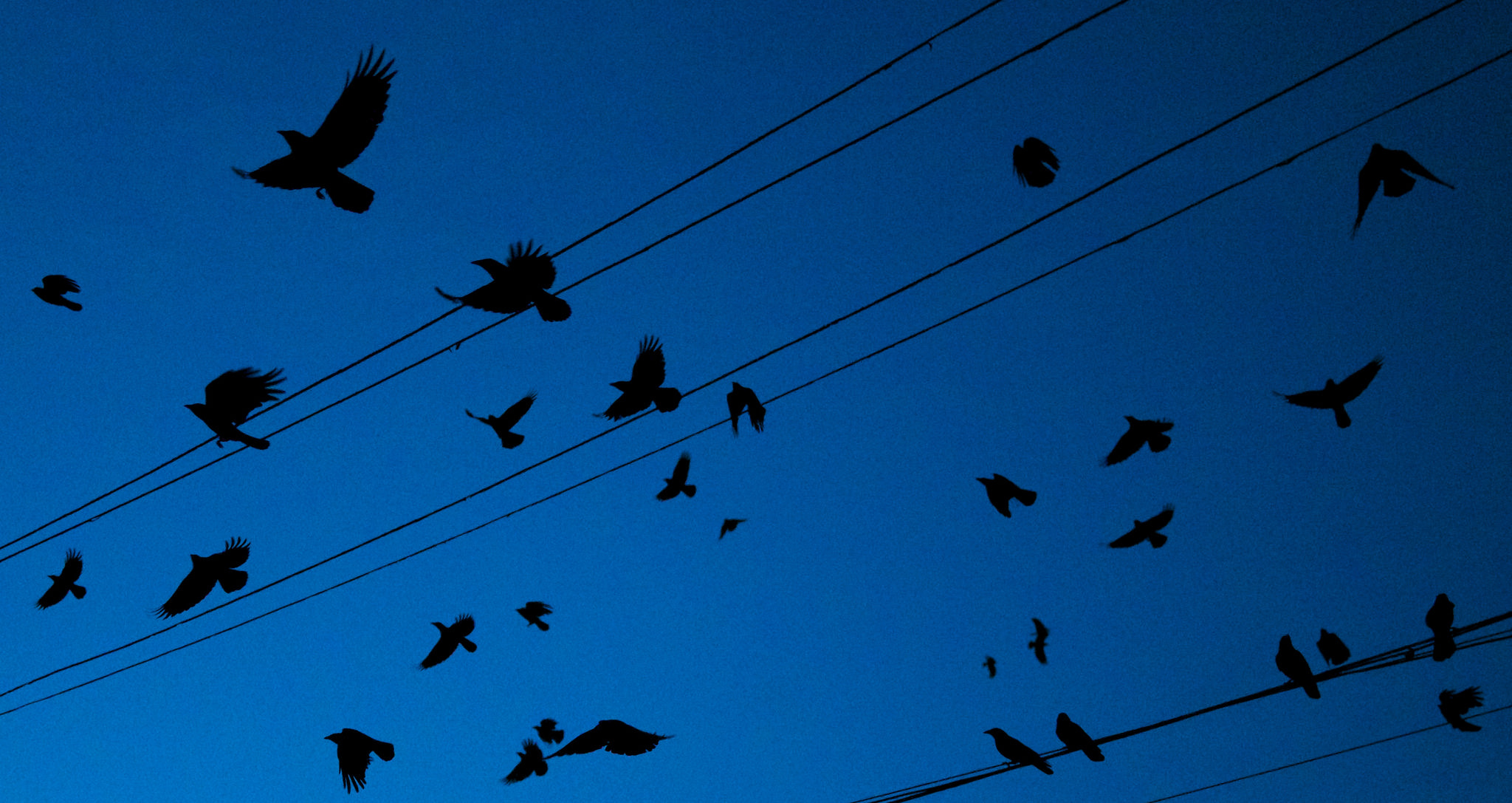Hundreds of crows are standing stock still in orderly rows on the University of Washington tennis courts. If their creepy gaze isn’t enough, nearby, overflowing a few leafless trees, is a cackling crow army, 10,000 strong. It looks as though the birds are going to take over the city of Seattle.
Seattle’s famously gray skies lend an air of Alfred Hitchcock to the scene, but this type of roosting behavior is common for crows. John Marzluff, a professor of forest sciences at the University of Washington who has been studying crows for over 20 years, described the scene in an NPR interview with Ashley Ahearn. Each winter 150,000 crows roost on the University of Washington, Bothell campus, actually causing the trees to slouch under their weight.
Birders and conservationists recognize crows as highly intelligent and complex animals. They mate for life, can live 20 years and have fascinating social lives. But when a huge group of crows — commonly called a “murder” — gathers in a city, human tolerance can be put to the test. Residents have described the crows as “creepy” and a “deafening black cloud” that completely blocks out the sun.
Knowing that there is safety in numbers, crows form massive roosts where they return to rest each evening, and during the day they disperse in groups to several staging areas within a short distance of their main headquarters. The locations of their roosts tend to change from year to year to decrease chances of becoming an owl’s lunch, and in winter when joined by migrating birds from Canada can grow to remarkable sizes.
While one documented roost in Oklahoma contained more than two million birds, most are much smaller. But thousands of crows are still highly noticeable.

These roosts and staging areas can be so noisy and immense that there have been instances of people going nearly insane from living near them. The incessant noise combined with the cultural association of crows being linked with evil or death can make the gatherings of crows a problem for some cities.
One such instance was in my town of Caldwell, Idaho, where I am a student in environmental studies at the College of Idaho. Each winter a murder of thousands of crows would gather in the local Walmart parking lot and create a ruckus filled with cawing and pooping. While a few people I know enjoyed watching the crows, they created an unfavorable reaction among locals.
Caldwell has a varied agricultural landscape, and worried farmers were calling the mayor and the police department for fear of the crows damaging crops. Local businesses were left with heaps of feathers and droppings to clean up each day from the birds and were worried this could effect business. After a few years of complaints, the Caldwell police department got desperate and took to shooting the birds out of trees in the night. Along with being an ineffective method to disperse crows, when residents found dead birds laying around the next morning, further upset ensued.
In a final attempt to cure the city of the crow problem, a bird control company was hired and through the work of shock sticks, reflectors and hazers the birds have left Caldwell … for the neighboring city of Nampa, just a few miles east.
Vickie Holbrook, the communications director for the city of Nampa, says that the city has received only two complaints about the birds in the past couple of years. “At this time, we don’t have any plans to address the crows,” she says. But while some cities may find the birds a nuisance, others actually enjoy their presence.
The residents of Bothell, Washington have a Facebook fan page titled “Bothell Crows” in which they post pictures of the birds, discuss interactions with them and share stories.
Susan and Ron Runyan, who live near the roost in Bothell, commented on the intelligence of crows and their grief at losing a comrade. “I was walking home and discovered a dead crow in the middle of the street, most likely hit by a vehicle. I couldn’t bear to see it destroyed even further, so I came back with a shovel and gently moved it off to the grassy shoulder. His ‘friends and family’ were quite vocal and hung close by. All I could do was say ‘sorry about your friend.’ Crazy, but I think they understood … and they became quiet.”

Bothell’s Animal Control Officer Debra Murdock says she has been personally dive bombed by these crows when she has been near a roost and there has been an injured chick or a member has died. In certain instances, she has had to wear a helmet to shield herself from their protective aggression, but there have been no instances of harm done to people or their pets.
At first glance, crow gatherings might look like complete chaos. But Marzluff speculates there is a pecking order of sorts among roosts. Birds roosting at lower spots in a tree will become covered with their friend’s feces throughout the night, while birds at the top may be more vulnerable to predators. The “zombie crows” lined up on the tennis courts at the University of Washington campus were most likely just scouting out the roost, waiting their turn to get a good spot.
Next time you see an enormous murder of crows flying overhead, rest assured it most likely isn’t signifying the apocalypse, but may just be the birds flying home to roost for the evening.



I live in Arlington on Lake Armstrong and we had a 60-count murder of crows gather each evening on the ground on the gravel road during the summer before the sun set. They seemed to be in deep discussions and planning “something”. This year there’s nary a crow to be found, even the Ravens have dissappeared. Any idea as to why they may have left or if the heat wave/heat dome of 2021 may have done them in?
Right now there is a large (maybe 500+) murder of crows flying in a frenzy around the tree across from my home. They are cawing up a storm. Fascinating to observe. My theory is that they are a “gang” of the young crows just hanging together and letting it all out. Springtime.
Woke this morning to thousands of crows (a large murder) about a block and a half away making an unbelievable racket. In Florida. But also heard owls, hearing those is not rare but not common either. And it was multiple owls hooting, I thought of Tippy Hedron and wondered what the hell is going on. I think maybe owls had been feasting on crow and that upset the whole murder. Since it is Thanksgiving the only other explanation I can think of is that all the millions of roasting turkeys has their nerves on edge. Even I can smell them cooking, they have much better smell senses than we do.